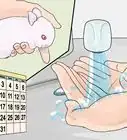This article was co-authored by Pippa Elliott, MRCVS. Dr. Elliott, BVMS, MRCVS is a veterinarian with over 30 years of experience in veterinary surgery and companion animal practice. She graduated from the University of Glasgow in 1987 with a degree in veterinary medicine and surgery. She has worked at the same animal clinic in her hometown for over 20 years.
There are 9 references cited in this article, which can be found at the bottom of the page.
wikiHow marks an article as reader-approved once it receives enough positive feedback. In this case, 100% of readers who voted found the article helpful, earning it our reader-approved status.
This article has been viewed 52,640 times.
Rabbits are inquisitive and energetic pets. They need regular exercise to keep them from getting bored and restless. If you have a rabbit, make sure you give it the time and space to run around and explore to stay active and healthy. Plus, exercising is a great way for you to spend time and bond with your furry friend. An active rabbit is a happy rabbit, and one who will enjoy spending time with you.
Steps
Playing Games
-
1Play tag. Rabbits like to run around, including after people. If your rabbit is coming towards you, turn and run away so it will chase you. Then, turn around and start chasing your rabbit so it can run away in the other direction. You can turn around again to make your rabbit the pursuer once more.[1]
- It may take a few times for your rabbit to figure out what you are doing, but once it learns that this is just a game, it’s a great way to get some running exercise.
- It can be good to crawl while doing this. Being closer to the ground will help your rabbit get comfortable with you.
-
2Hold treats out for your rabbit to reach. This is good to get your rabbit to stretch out different parts of its body. Make sure the food is just out of regular reach so your rabbit has to really extend to get there.[2]
- Hold a treat in your hand in the air above your rabbit’s head. Make sure it has to stand up and stretch to get there.
- Put your rabbit on a box or table, and either hold or place a treat just off the edge. Your rabbit will need to stretch its neck to get there. Just make sure your rabbit doesn’t slip or fall off the edge.
Advertisement -
3
-
4Hide food. Take some small treats or pellets and hide them somewhere your rabbit likes to explore. It will smell the food, and try to hunt down a treat.[5] Alternatively, you can put some raisins into a small paper bag, and let your rabbit dig around the bag to find them.
-
5Create a digging box. Rabbits love to dig around. Take a large cat litterbox, or something of similar size, and layer the bottom with newspapers. Put some crumpled up newspapers on top to encourage digging. Your rabbit will enjoy shredding and tearing apart the newspaper.[6]
- By rummaging around in newspaper, your rabbit will probably get ink on its nose, paws, and other parts of its body. Don’t worry, the ink is nontoxic, so your rabbit will be just fine.
-
6Train your rabbit to follow commands. Rabbits are intelligent creatures, and are quite easy to train. Think about commands you want your rabbit to follow, and create steps for it to accomplish them. Reward good behavior with praise and a treat, but just be sure the rabbit doesn’t do something else first, or else you will be rewarding the wrong behavior.
- Include simple command words, like “Sit” or “Jump,” so your rabbit begins to associate those words with what you want it to do. Once your rabbit is getting the hang of its tricks, start weaning off the treats, so it only follows commands.
- Some good tricks include getting your rabbit to jump up and down onto places like the couch or your lap, running into and around certain parts of its play area, house breaking, or stopping aggressive behavior.
- You can also use a clicker to reinforce what you are doing. When you provide treats, also click so the rabbit associates the sound with a treat.[7]
- Make sure you don’t yell at or hit your rabbit during training. This will only make the rabbit uneasy or scared of you, which you definitely don’t want. Your rabbit should associate your hands with food and affection, and if you hit your rabbit may become more aggressive.[8]
-
7Walk your rabbit on a leash. If you want to take your rabbit out for a bit, attach it in a harness with a leash. Your rabbit will probably resist the harness at first, so make sure you have little delay between putting it on and going for your walk.[9]
- Look for H-style harnesses, which you’ll probably find the cat section of the pet store. Don’t use harnesses or collars that go around the neck, as these can cinch the neck and cause injury. Make sure you have a stretchy leash, and don't tug too much while walking, as that is also a good way to hurt your rabbit.
- In general, rabbits will prefer more unstructured freedom to roam and explore rather than a restricted walk. Still, this can be another way to get your rabbit out for some movement.
- Never leave your rabbit leashed if you are not around. Left alone, your rabbit may chew through the leash, get tangled in it, or be unable to escape a predator.
Working Exercise into Your Rabbit’s Day
-
1Give your rabbit 3 hours of free ranging time a day. Rabbits need up to 3 hours a day where they can run about and stretch their legs. If you allow your rabbit the space to roam around your house, this doesn’t need to be structured playtime, which can be easier on your time.[10]
-
2Get on the floor with your rabbit. Rabbits are curious and friendly, and you can do a lot to encourage your pet’s activity by getting down on its level. Get down on the floor with your rabbit and its toys. The rabbit will explore around you, and may even follow you as you roam around your house.[11]
-
3Move your rabbit around. If rabbits are given regular free range, especially indoors, they may get comfortable in particular places and spend too much time relaxing there. If you are worried about your rabbit settling, pick it up and move it to a different part of your house. The rabbit will get a little bit of exercise hopping back to the preferred location.
- Alternatively, you can confine your rabbit for a few hours, limiting the space it can move around in. That way, when you remove the barriers and let it free, your rabbit will be more likely to explore the parts it couldn’t go before.[12]
- You can also take some of your rabbit’s favorite toys and move them to different areas. Your rabbit will want to track them down, and maybe bring them back where it thinks they belong.
-
4Watch for problems. Just like in humans, rabbits that don’t get exercise will suffer from various health problems. If you notice your rabbit suffering from some of these concerns, you may need to take some time to get your rabbit exercising. You should also consult with your vet to see what else you should do to help your rabbit.[13] Problems include:
- Obesity. Without exercise and a good diet, your rabbit will gain weight, which will add stress to other parts of its body, including the cardiovascular system and the pads of its feet. Your rabbit will even find it difficult to groom itself effectively. Keep an eye on your rabbit’s weight, and make sure it is getting a healthy diet of grass hay and fresh foods.
- Behavioral problems. If your rabbit is not getting enough exercise, it may also become bored and unhealthy. Look out for signs that your rabbit isn’t healthy such as lethargy, aggression, chewing cage bars or its own fur, or destroying parts of its cage.
Creating a Play Area
-
1Leave toys around. Rabbits are curious and playful. While they may not always be interested in toys you have, leaving things around for them to play with will help prevent boredom.[14]
- These don’t need to be fancy toys bought at a pet store. Rabbits can enjoy themselves with untreated wood products, hard plastic baby toys, pine cones, oatmeal boxes, and phone books. Just be prepared for your rabbit to chew those items up.
- You can move toys around too. When something isn’t where your rabbit expects it to be, it will naturally try to explore and learn more.[15]
- Avoid toys made from cherry, redwood, and peach wood, as these materials can be poisonous to rabbits.
-
2Give your rabbit enough space. Rabbits are fast, active animals that like to run and jump around. In the wild, rabbits can run up to 3 miles every day. You probably don’t have 3 miles to give your rabbit, but you want to make sure your rabbit’s secure play area is large enough for it to move around. Ideally, your rabbit run will be at least 8 feet long and 4 wide with some kind of fence or barrier at least 4 feet high.[16]
-
3Create raised platforms. Rabbits need to exercise their legs by jumping on and off raised areas. These don’t need to be complicated things, maybe a box or chair that your rabbit will be able to jump on and off of. Keep these areas near grassy or soft areas for more comfortable landings.[17]
- You can encourage your rabbit to jump up and down on these platforms by placing treats on top of them or back on the ground.[18]
-
4Provide hiding places. Rabbits sometimes need an area where they can feel safe and secure. Your rabbit will also want an area that it can go to get out of wind and rain, or just go if it feels stressed and afraid, or simply wants to be alone. Make sure your shelters are big enough for your rabbit, and try to make more than one entrance if possible.[19]
- Cardboard or wooden boxes, paper sacks, sections of wide-bore drain pipes, and shelves are all good places for a rabbit to hide.
- If you have multiple rabbits, make sure you have enough hiding spaces for each individual.
-
5Remove potential hazards from the area. Because of their curiosity and speed, rabbits can easily get themselves into trouble, even if you are watching. Make sure you’ve gotten rid of hazards or other things that can cause harm to your pet.
- Make sure the area is sealed off and doesn’t have any small holes, like in a fence, where your rabbit can escape from the area. Outside of a den or other safe space you have set up for it, you don’t want your rabbit to get somewhere you can’t reach.
- Remove house plants and weeds to prevent your rabbit from eating something poisonous.
- Block off wires with a PVC pipe, or wrap them in electrical tape to prevent nibbling.
-
6Watch your rabbit at all times. If your rabbits are going to be let loose outside, you need to keep an eye on them at all times. Keep an eye out for possible escape attempts, poisonous items they may try to eat, and any predators that might be lurking nearby.[20]
Warnings
- Rabbits that do not exercise enough can suffer from various conditions, including poor bone density (osteoporosis) and poor muscle tone, which can put undue stress on the heart. A rabbit that doesn’t get enough exercise may get hurt when you do give it some exercise. This can be an injury to a fragile spine or other long bones, or even cardiac failure from the stress of exercise.[21]⧼thumbs_response⧽
References
- ↑ https://coloradohrs.org/games-to-play-with-your-rabbit/
- ↑ https://coloradohrs.org/games-to-play-with-your-rabbit/
- ↑ http://myhouserabbit.com/rabbit-behavior/playing-with-your-pet-bunny/
- ↑ https://coloradohrs.org/games-to-play-with-your-rabbit/
- ↑ http://www.veterinarypartner.com/Content.plx?A=470
- ↑ http://www.veterinarypartner.com/Content.plx?A=470
- ↑ http://www.clickerbunny.com/article_clickerbunny.htm
- ↑ http://www.bio.miami.edu/hare/training.html
- ↑ https://www.petfinder.com/pet-care/rabbit-care/rabbit-leash-walking/
- ↑ https://www.saveafluff.co.uk/rabbit-info/exercise
- ↑ http://www.veterinarypartner.com/Content.plx?A=470
- ↑ http://www.veterinarypartner.com/Content.plx?A=470
- ↑ http://www.veterinarypartner.com/Content.plx?A=470
- ↑ http://myhouserabbit.com/rabbit-behavior/playing-with-your-pet-bunny/
- ↑ http://www.veterinarypartner.com/Content.plx?A=470
- ↑ https://www.saveafluff.co.uk/rabbit-info/hutches-and-runs
- ↑ https://www.nidirect.gov.uk/articles/welfare-rabbits-need-suitable-environment
- ↑ https://coloradohrs.org/games-to-play-with-your-rabbit/
- ↑ https://www.nidirect.gov.uk/articles/welfare-rabbits-need-suitable-environment
- ↑ https://www.saveafluff.co.uk/rabbit-info/exercise
- ↑ http://www.veterinarypartner.com/Content.plx?A=470
About This Article
To exercise your rabbit, try playing tag with it by running away when it comes towards you and then running after it when it runs away. You can also play games like fetch and hide and seek with treats to get your rabbit moving. Or, you can train your rabbit to wear a harness and walk on a leash so you can take it for walks every day. Additionally, leave toys out for your rabbit so it can play and exercise by itself when you're not around. For more tips from our Veterinary co-author, like how to make a fun digging box for your rabbit, keep reading!
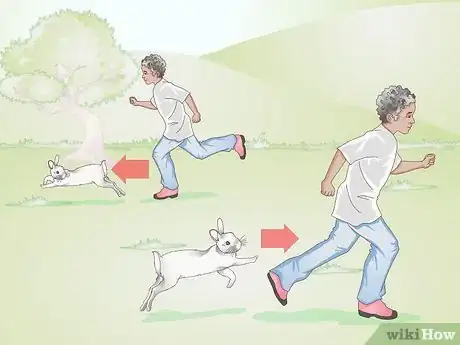
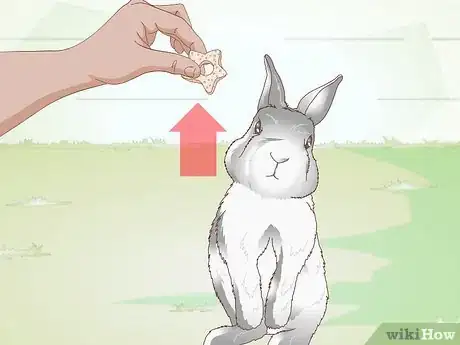
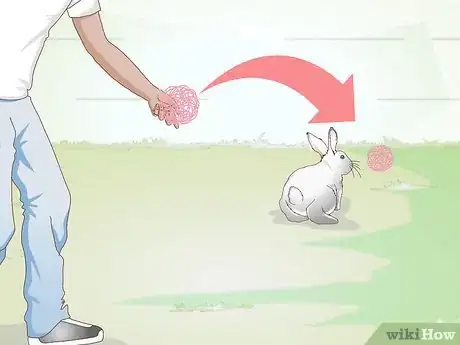
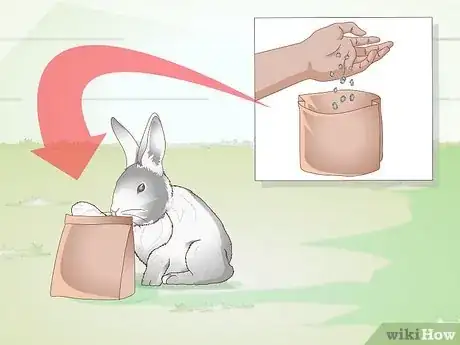

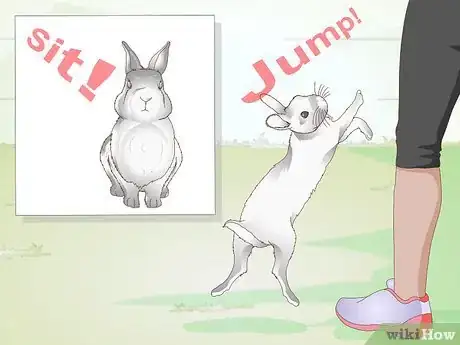


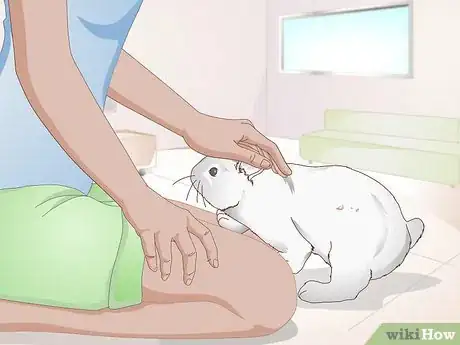
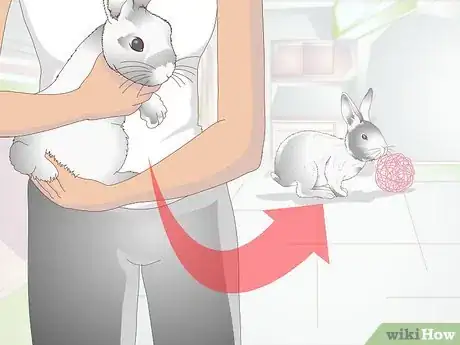
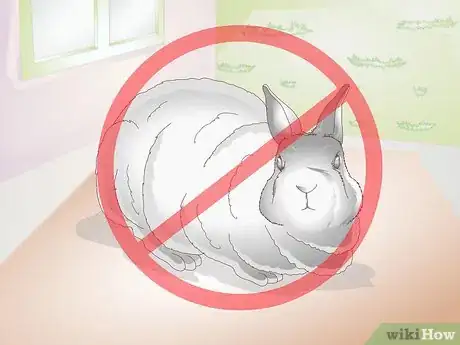



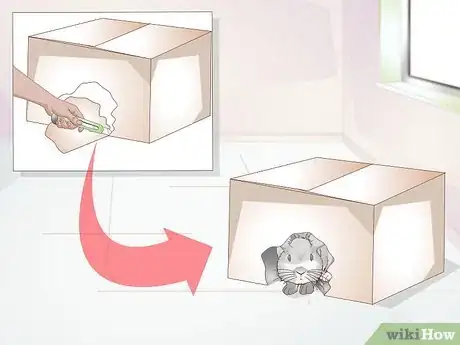
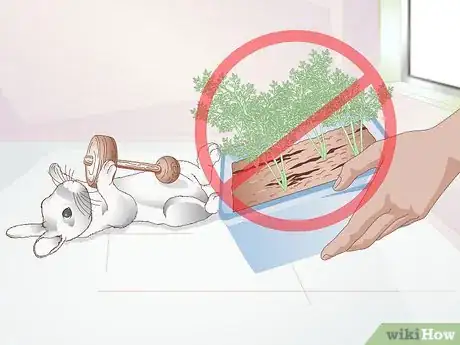
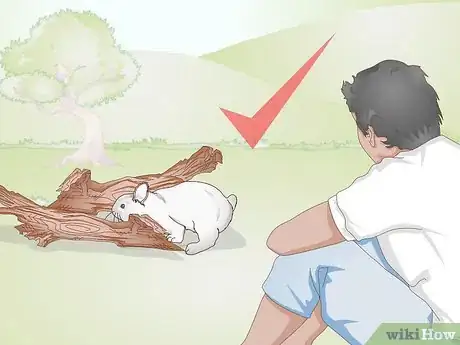




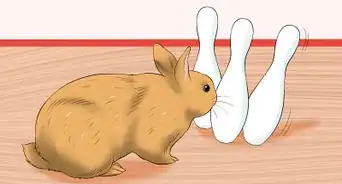
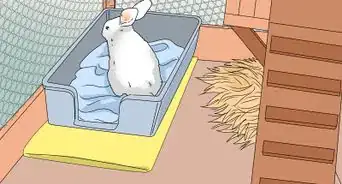
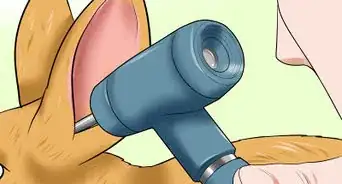

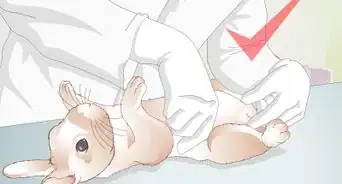




-in-Rabbits-Step-12.webp)












